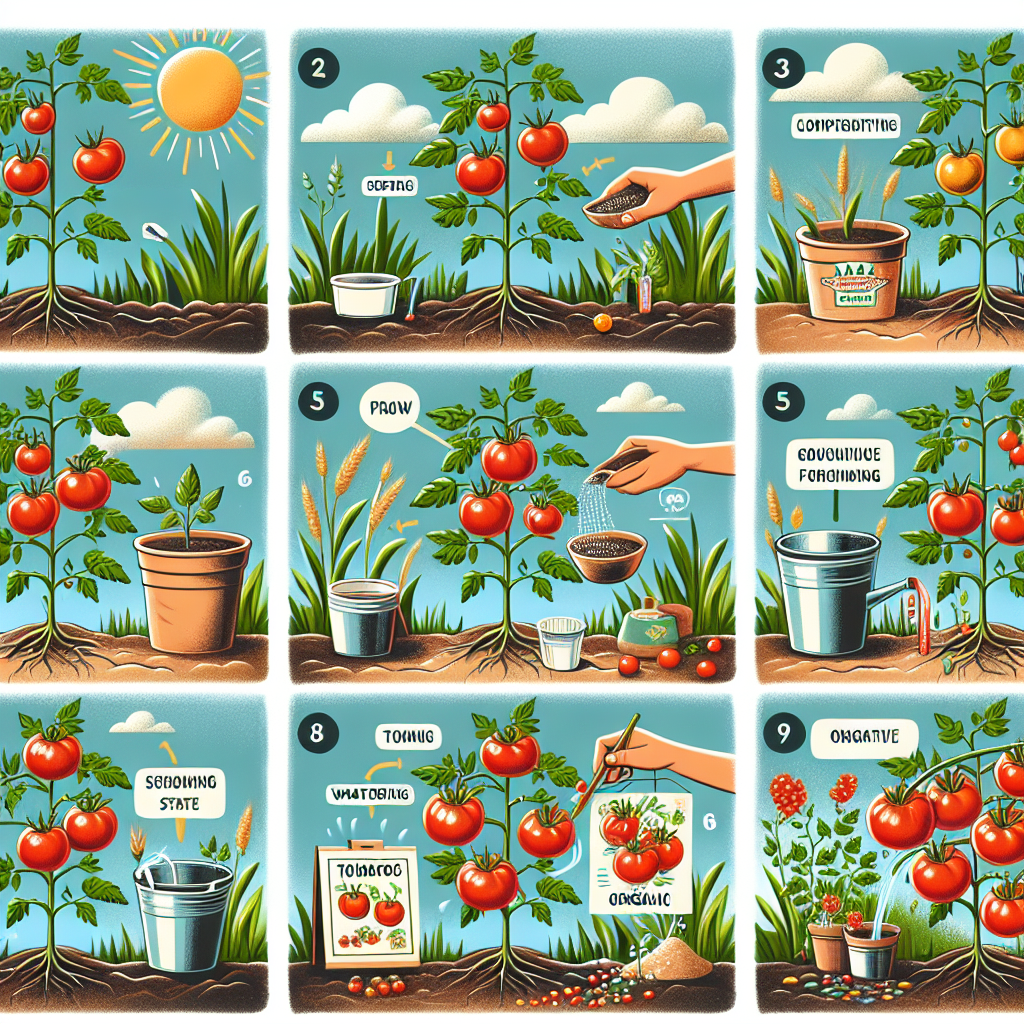
How to grow tomatoes without a greenhouse
How to Grow Tomatoes Without a Greenhouse: A Complete Guide
Growing tomatoes is a rewarding and productive endeavor, and you don't necessarily need a greenhouse to succeed. Many gardeners find that they can cultivate delicious tomatoes right in their own backyard or on their balcony. This article will guide you through all the necessary steps and tips to grow tomatoes effectively without a greenhouse.
Understanding Tomato Varieties
The first step in growing tomatoes without a greenhouse is choosing the right variety. Tomatoes come in numerous types, each suited for different growing conditions. Here are some popular varieties you might consider:
- Determinate Varieties - These tomatoes grow to a certain height and then stop. They tend to produce all at once, making them ideal for canning.
- Indeterminate Varieties - These continue to grow throughout the season, providing a harvest over a longer period. They are perfect for fresh eating.
- Cherry Tomatoes - Small and sweet, these are excellent for snacking and container gardening.
- Heirloom Tomatoes - Known for their unique flavors and colors, heirlooms are typically open-pollinated varieties that can be saved for future planting.
Finding the Right Location
When it comes to cultivating tomatoes without a greenhouse, location is crucial. Here are some factors to consider:
- Sunlight: Tomatoes thrive in full sunlight, so select a location that receives at least 6 to 8 hours of sunlight daily.
- Protection from Wind: A sheltered area can help protect your plants, especially once they've grown tall.
- Soil Quality: Good drainage and nutrient-rich soil are essential for growing healthy tomatoes. Aim for a slightly acidic to neutral pH (6.0 to 7.0).
Soil Preparation
Proper soil preparation sets the stage for successful tomato growth. Here are some steps to improve your soil:
- Test your soil to determine its pH and nutrient levels. Home testing kits are widely available.
- Add organic matter, such as compost, to improve soil structure, drainage, and nutrient content.
- If necessary, amend your soil with fertilizers like bone meal, blood meal, or an all-purpose vegetable fertilizer.
Starting Seeds or Transplanting
You can either start your tomatoes from seeds or buy young transplants from a nursery. Each method has its advantages:
- Starting from Seeds: This method allows you to choose from a wider variety of tomatoes and saves money. Start your seeds indoors about 6-8 weeks before the last frost date.
- Buying Transplants: This is a straightforward option and can save time. Look for healthy plants with sturdy stems and dark green leaves.
Transplanting and Spacing
When it's time to transplant your seedlings or young plants outdoors:
- Ensure that the soil temperature is consistently above 60°F to prevent shock.
- Space determinate varieties about 18-24 inches apart and indeterminate varieties approximately 24-36 inches apart.
- Plant them deep, burying two-thirds of the stem. This encourages a strong root system.
Watering Techniques
Proper watering is crucial to growing tomatoes without a greenhouse:
- Water deeply but infrequently. This encourages roots to grow deep into the soil.
- Use drip irrigation or a soaker hose to minimize evaporation and keep the foliage dry, reducing the risk of fungal diseases.
- Monitor soil moisture regularly, especially during dry spells.
Providing Support
As tomato plants grow, they will need support to prevent breaking or sprawling on the ground. Here are some supporting methods:
- Cages: Use tomato cages made of wire or welded fencing to provide a sturdy frame.
- Stakes: Drive stakes into the ground when planting, tying stems gently as they grow.
- Trellises: For indeterminate varieties, a trellis can help support them vertically.
Fertilizing Your Tomatoes
Tomatoes are heavy feeders and require adequate nutrition to flourish. To fertilize your plants:
- Start with a balanced fertilizer at planting time.
- After the first fruits begin to develop, switch to a fertilizer higher in potassium and phosphorus, like a 5-10-10 formulation.
- Refrain from over-fertilizing, as this can lead to lush foliage but fewer fruits.
Pest and Disease Management
Growing tomatoes brings the risk of various pests and diseases. Here are strategies to manage them:
- Regular Inspections: Check your plants frequently for signs of pests or diseases.
- Companion Planting: Grow plants like basil, marigolds, and nasturtiums nearby to repel pests.
- Organic Treatments: Introduce beneficial insects, such as ladybugs, or use organic treatments like neem oil.
Harvesting Your Tomatoes
Knowing when and how to harvest your tomatoes is just as important as the growing process:
- Tomatoes should be harvested when they have fully colored and are slightly soft to the touch.
- For best flavor, pick them at their peak ripeness.
- Use clean scissors or pruning shears to remove the fruit without damaging the plant.
Conclusion
Growing tomatoes is not only a fun activity but a chance to enjoy fresh produce right from your garden. By following these tips and understanding how to grow tomatoes without a greenhouse, you can achieve a bountiful harvest. Remember to choose the right variety, prepare your soil, support your plants, and keep an eye out for pests and diseases. With a bit of dedication and care, you'll be rewarded with delicious, homegrown tomatoes to enjoy throughout the season.
By Guest, Published on August 4th, 2024